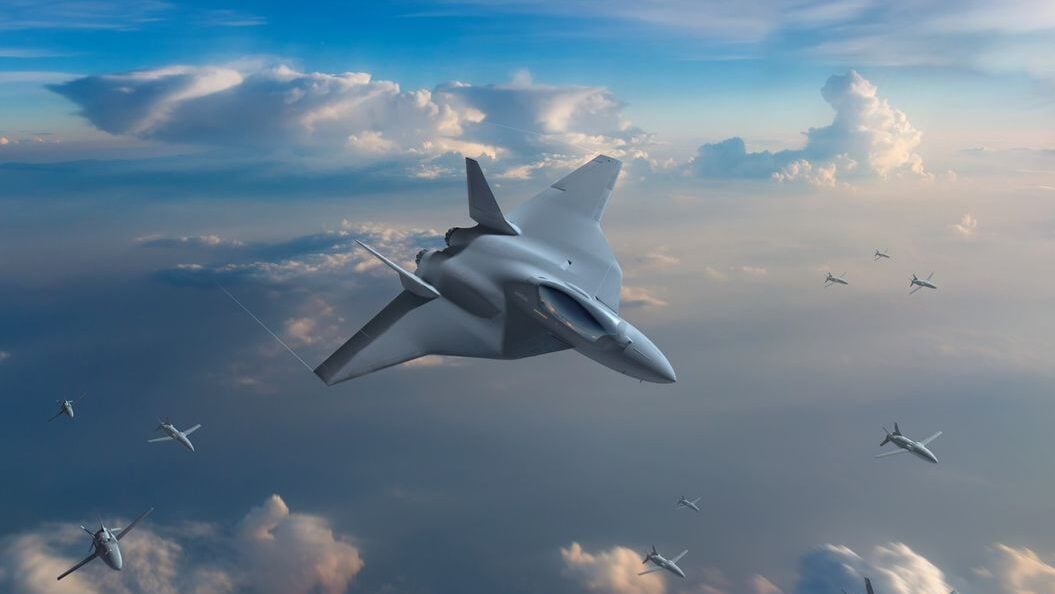After months of dilly-dallying, Belgium has finally entered the European next-generation aircraft program called the ‘Future Combat Air System’ — as an observer.
The FCAS program, a ‘system of systems’ anchored by a sixth-generation fighter jet, involves collaboration among companies from France, Germany, and Spain. Belgium expressed its initial commitment to the project at the Paris Air Show in June last year, but the move to participate has dragged on for almost a year.
Ending all speculation after months of dilly-dallying, the Belgian government recently announced that the country had joined the trilateral grouping of France, Germany, and Spain in the Future Combat Air System (FCAS)/Système de Combat Aérien du Futur (SCAF) program. It specified that it now has an “observer status” in the program.
The announcement was made in a joint statement released on April 26 by the Minister of Defense, Ludivine Dedonder, and the Deputy Prime Minister and the Minister of Economy and Labor, Pierre-Yves Dermagne. “On 24 April, the government obtained observer country status for Belgium as part of the FCAS/SCAF development program,” the statement read.
As per reports, a “summit” of the FCAS grouping will be conducted later this year, during which Belgium will be formally welcomed to the project.
Belgium has approved its observer status in the NGWS/FCAS programme with an investment of €60 million for R&D. A new European country on board.
The NGWS/FCAS has the potential to be a game changer for a more coherent European defence policy and industry. pic.twitter.com/uNB6H5aK3F
— Jean-Brice Dumont (@JeanBriceDumont) April 29, 2024
Dedonder said in a press conference, “This observer status will allow us to closely follow the development of this program, which is crucial for the future of Belgian and, above all, European defense, and to make an informed decision on our possible participation in the subsequent development phases.”
As per the statement, Belgium can participate in strategic discussions and obtain information about the program and its progress with its newly acquired observer nation status in the future. The ministers stated that by becoming an observer, Belgium would be able to fully understand the program and its implications for the Belgian defense industry.
The ministers stated that Belgium was determined to join the FCAS/SCAF effort as soon as possible, considering its recent experience with the Lockheed Martin F-35 Lightning II Joint Strike Fighter program. “This should then allow us to obtain significant and structuring societal returns while also having the opportunity to acquire the necessary know-how from the first phases for the benefit of our companies and our workers,” Dermagne said.
Previous reports suggested that Belgium would join the program before the onset of Phase 2 in the FCAS initiative. Currently, the program is in Phase 1B, where manufacturers are tasked with designing a technology demonstrator for the ‘system of systems,’ centered around the sixth-generation fighter jet known as the Next Generation Fighter (NGF).
Earlier, Belgium chose the US-origin F-35 Lightning II aircraft in 2018 over the European Eurofighter Typhoons.
The purchase, at that time, came as a big blow to the consortium of Britain, Germany, Italy, and Spain, which had lobbied aggressively to get the Belgian fighter jet contract. However, a fifth-generation, radar-evading stealth jet for Belgium was more appealing. Belgium received the first of the 34 F-35 fighter jets at a ceremony in Fort Worth held in December last year.
However, with the acquisition of a fifth-generation fighter on track, Brussels has now set its sights on the next-generation FCAS despite the European program’s previously troubled track record.

FCAS On Track
The current FCAS industry leads, including France’s Dassault, Germany’s Airbus, and Spain’s Indra, are aiming to develop a Next Generation Fighter (NGF), Remote Carriers or adjunct aircraft, and a combat cloud — a multi-domain capable, data-rich network enabling cross-platform information sharing.
The program has been plagued with several difficulties since its inception, including differences in its design and finances. A significant impasse occurred when the conflict between aircraft manufacturers Airbus and Dassault halted the program, with disagreements arising over technology sharing and leadership responsibilities.
Germany’s dedication to the project was also called into doubt when rumors circulated that the nation was thinking of dropping out of the collaborative next-generation fighter jet project with France in favor of joining Britain and France in a competing effort.

Germany subsequently denied these reports, highlighting the significance of its cooperation with France. The total development timeframe has been delayed as a result of these problems.
The French Directorate General of Armament (DGA) outlined in a summary of FCAS that operational systems would be in service “by 2040,” but Dassault Aviation’s CEO Eric Trappier dismissed this timeline as “out of the question” due to the project’s complexity. Trappier suggested a more likely timeframe between 2042 and 2044.
The program is reportedly considering four different fighter designs, with a final choice coming in the first quarter of 2025. An unknown official revealed in November last year that the consortium was looking at cutting down to two designs by June 2024 and deciding on a final design “by” March 2025.
The three countries have reached a consensus over a specific number of crucial aircraft capacities. However, analysts believe that there is always a window for disagreements to surface. The addition of Belgium has the potential to rekindle tensions that previously resulted in a year-long deadlock before the industrial stakeholders reached a consensus for Phase 1B.
However, for now, the program looks to be on track with the addition of an observer.
- Contact the author at sakshi.tiwari9555 (at) gmail.com
- Follow EurAsian Times on Google News




